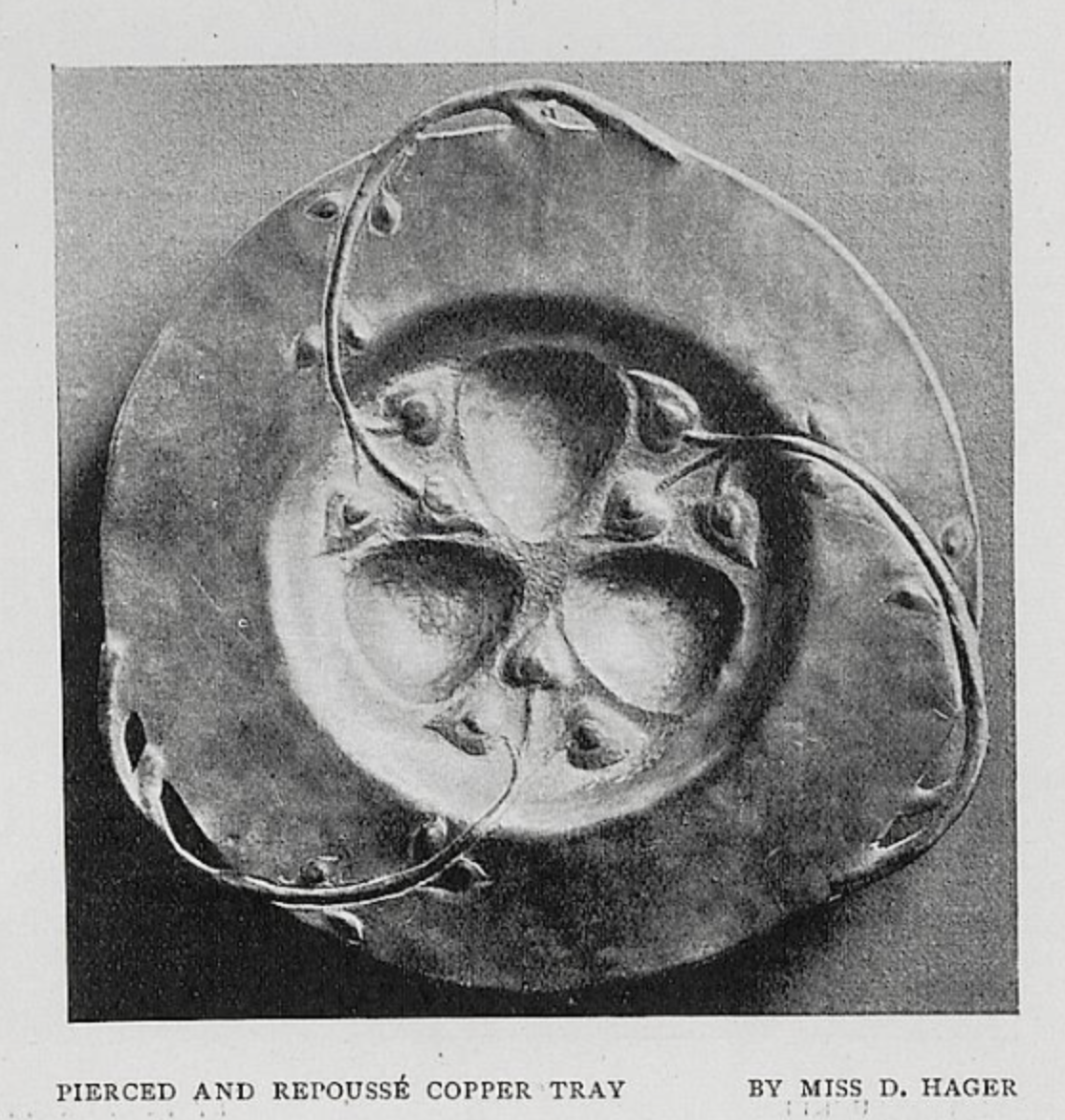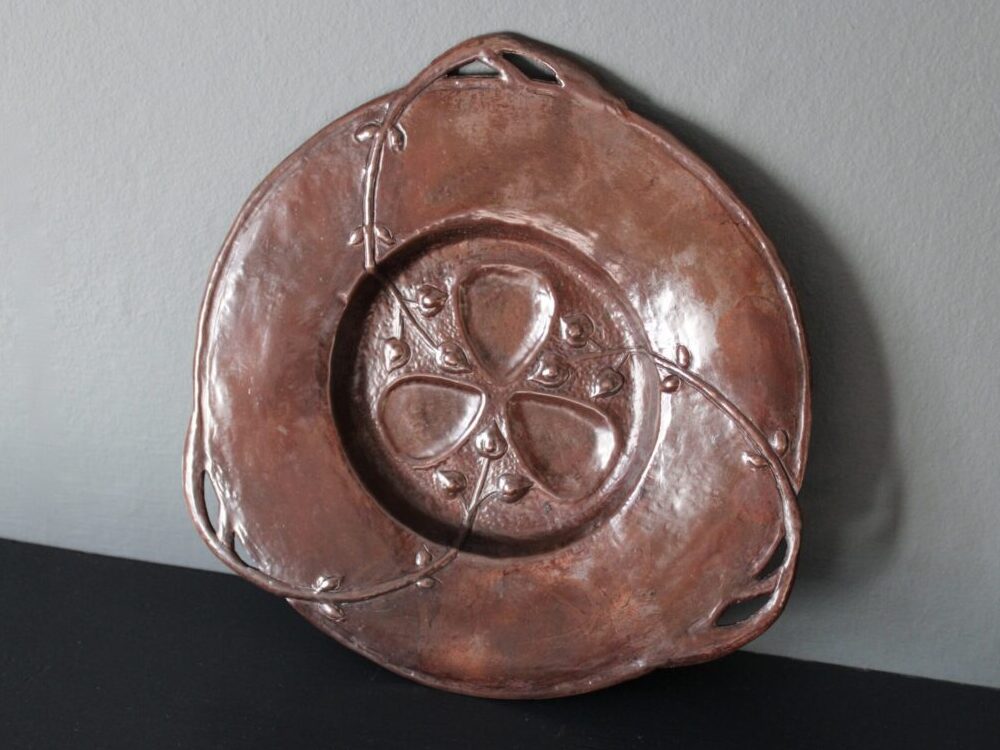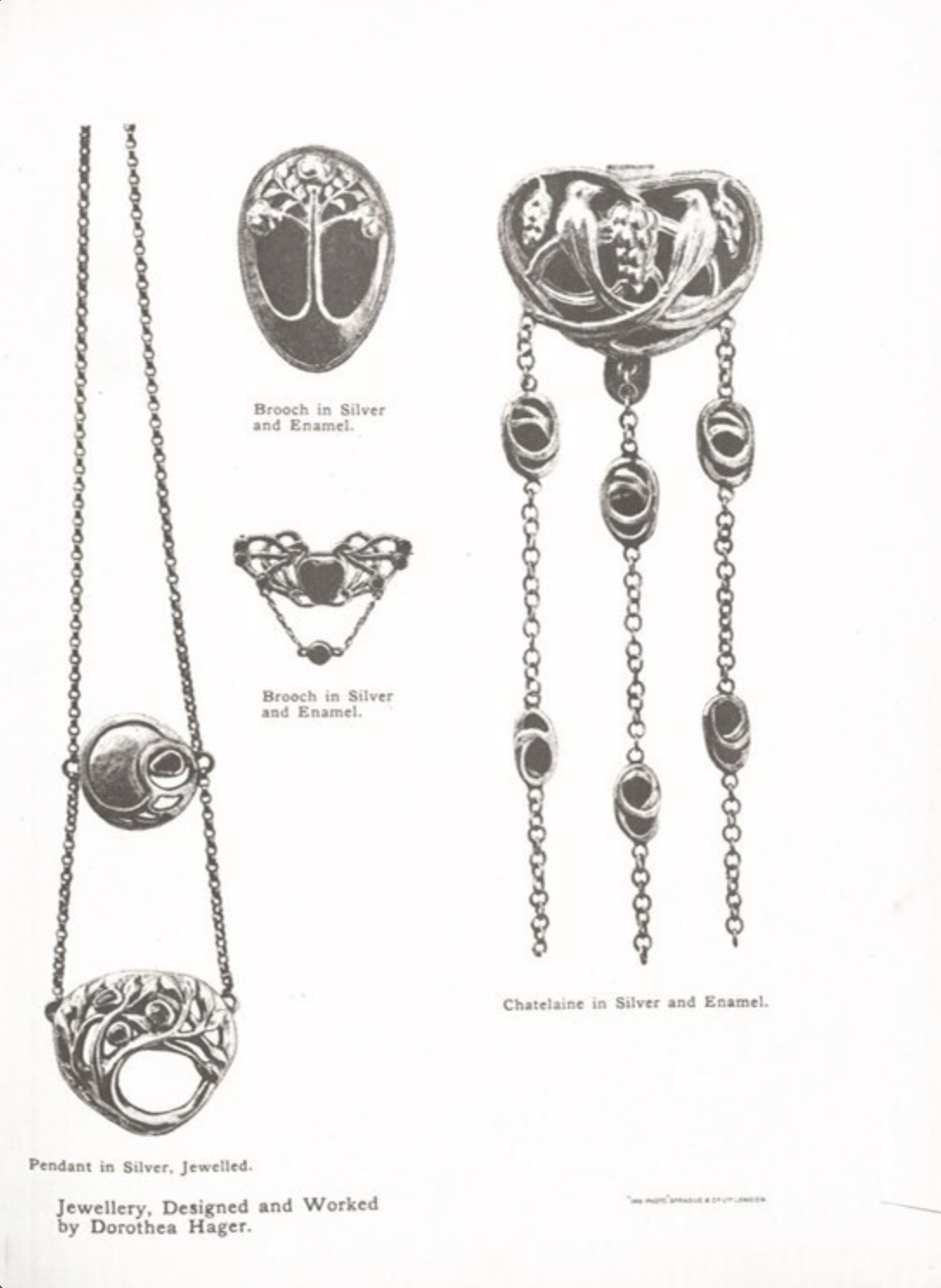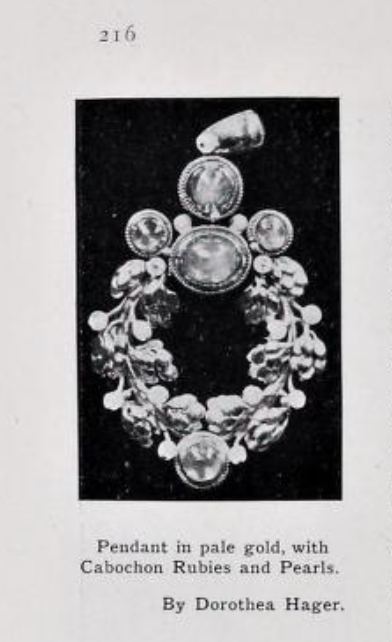The forgotten contribution of Dorothy (Dorothea) Hager
Finding a copper tray by a Miss D. Hager has given me a opportunity to write about a number of things. The first is to give a piece back its full history which is what it’s all about for me. The second is to highlight the work of Dorothy (Dorothea) Hager, as her contribution to Arts and Crafts metalwork and jewellery seems to have been largely forgotten over time. It always feels to me that the female designers and makers of this period were overlooked in favour of their male counterparts. Finally, a piece like this reminds me that there were hundreds of very talented designers and makers of this period. Their work may never be correctly attributed so we need to keep the research going and add to the body of knowledge that’s already out there. Not everything was made by the same handful of craftspeople that everyone seems to latch on to these days when attributing a piece!
Dorothy Hager was born in June of 1882 in a suburb of Manchester called Withington. It should be pointed out that she often used the name “Dorothea”, particularly once she became well established as a metalworker. Her father was German but a British subject and in the 1891 census his profession is listed as “teacher of German”. Dorothea is German for Dorothy which no doubt explains the use of both names. They lived at 15 Brook Road in Withington and were apparently quite wealthy as the household included a cook, nurse and housemaid. Dorothy was the youngest of three children. She had a brother Ernst and a sister, Margaret. Her mother, Helena Hager, was born in Brixton, Surrey.
In 1891 she is an 8 year-old scholar but all attempts to find the family in the 1901 census have been unsuccessful. This is a shame because it’s a key moment in her life as, by 1901, she is a student at the Birmingham School of Art. Dorothy’s work was illustrated in The Studio when she was a 19 year old student at the School.

Copper tray with repousse decoration by Dorothy Hager. Illustrated in The Studio, 1901.

The same design of copper tray with repousse decoration by Dorothy Hager.
Dorothy was a student at the Jewellers’ Association School in Vittoria Street which was part of the Birmingham School of Art . At this time, E.R. Taylor, founder of the Ruskin Pottery, was headmaster of the Birmingham School of Art. Dorothy was mentioned in The Studio’s article about the annual exhibition of work completed by the students from the School.
“Miss D. Hager displayed her versatility in a well-carried-out copper tray, pierced and repousse.”
Dorothy was in very good company and her fellow students mentioned in the article included Bernard Cuzner. Alfred. H. Jones, Kate Eadie and Lillian Dale to name but a few.
By 1902 Dorothy had left Birmingham and moved to London. She was now one of a number of female students at Alexandra House in Kensington Gore. Alexandra House is adjacent to the Royal Albert Hall and was built as a student hostel for 100 female students at the Royal Colleges of Music, Art and Science. The house was built in 1884 as a result of the concern by the University of London that there was a lack of provision for accommodation for students in South Kensington in the early days of the Science and Art Department. The establishment of the National Training School for music in 1876 (Now the Royal College of Music) made the question even more pressing. Accommodation for “young lady students” was even more urgently required and in 1884 the merchant and art collector, Sir Francis Cook, founded and paid for Queen Alexandra’s House to be built for ”young lady students at the various schools of art, music and science”. The house was named after Princess Alexandra who laid the foundation stone and who became Queen Alexandra when she visited the house in 1910.
Jewellery made by Dorothy was exhibited in May of 1902 in an Arts and Crafts exhibition at Alexandra House. This was an exhibition of the work by the lady students at Alexandra House. The Art Workers Quarterly published an article about the exhibition and Dorothy’s work was illustrated.

Jewellery by Dorothea Hager illustrated in the Art Workers Quarterly in 1902.
The article stated that “On Plate No. 2 are reproduced two brooches and a chatelaine in silver and enamels, also a pendant in silver, jeweled, by Miss Dorothea Hager. Perhaps the pendant, which has a pierced ornament, is the most pleasing example, but the chatelaine contains many good qualities that will appeal to the art worker.”
The next reference to Dorothy is found in 1905 when she exhibited at the Amateur Arts and Crafts Exhibition Society at Didsbury, Manchester. Dorothy was one of the chief exhibitors along with Miss Ethel Virtue, Mrs. W.S. Hadaway and another of my personal favourites, the Potteries Cripples Guild.
Later in the same year Dorothy exhibits jewellery at an exhibition by the Royal Scottish Academy where her work, and the work of the well-known Arts and Crafts jewellery makers, Mr & Mrs Gaskin, was described as of a high standard.
In 1906 examples of her jewellery, under the name of Dorothea Hager, were illustrated in The Art Journal as part of the Women’s International Art Club. The exhibition was at Burlington House in London and Alexander Fisher, Harold Stabler and Florence Steele also exhibited.

Jewellery by Dorothea Hager illustrated in the Art Journal in 1906.

Jewellery by Dorothea Hager illustrated in the Art Journal in 1906.
In December of 1907 Dorothea was mentioned in an article about the presentation of badges to Princess Christian nurses. Princess Christian of Schleswig-Holstein (Queen Victoria’s third daughter) was presenting certificates and badges to nurses trained in Manchester. We are told that her Royal Highness was much pleased with the badge designed by Miss Dorothea Hager. It represented an infant with outstretched arms in an oval silver frame, surmounted by foliage and the initials PC in green enamel. The whole suspended from a brooch bearing the college’s motto: “Faithful in that which is least”.
In 1908, Dorothea’s work was exhibited again at the exhibition of Arts and Crafts at Alexandra house where her jewellery was described as having great merit.
In 1909 she also exhibited at the Manchester Exhibition where over four hundred pieces of the best modern handicraft had been gathered at the Manchester School of Art. Exhibitors included the best of the best – The Guild of Handicraft, Birmingham Guild of Handicraft, Artificers Guild, John Williams, May Morris, Florence Steele, Kelloch Brown and Henry Wilson.
At this point Dorothea was likely at the peak of her career as a maker of Arts and Crafts jewellery. In 1911 she was living in West Kensington, London, with her widowed mother and a domestic servant. Her occupation is described as “Designer of Silver work and jewellery” and she was working on her own account from her home.
Dorothea never married and later in her life she focused more on other handicrafts, in particular embroidery. Her interest in the Arts and Crafts movement remained and she exhibited a Child’s linen bonnet at the 1928 Arts and Crafts Exhibition Society exhibition.
By 1939 Dorothea was living in Welwyn Garden City and working as an Embroideress. Dorothea died in 1964 in Finchley, Middlesex. Despite the fact that her work was high regarded and appreciated there is hardly a mention of her in any modern reference books covering Arts and Crafts movement jewellery and metalwork. No doubt she would have had quite a story to tell. I have only been able to find one reference to a piece of jewellery or metalwork being sold through a dealer or auction house. In 1992 at Christie’s a white metal brooch by Dorothea Hager was sold as part of the British Decorative Arts and Art Deco auction.
I am hoping the discovery of her copper tray and this article will help to keep her history alive.